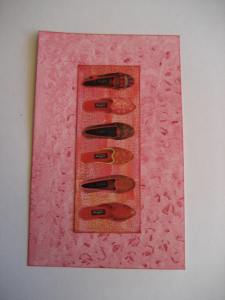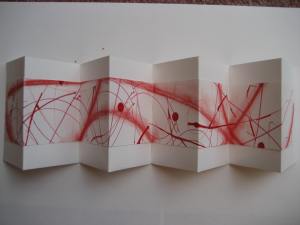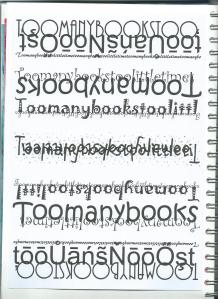Module 1 – Chapter 10 – Activity 10.1 – Celebrating Colour
Years ago now, I completed a City and Guilds qualification in Interior Design and Decorative Painting. One part of the course consisted of designing and completing the decoration of various rooms (we had part of a wall, which included a vertical section of a door, and skirting board). It occurred to me, after completing a couple of the assignments, that if I was able to get any design work, it could end up with me having to work with colours that personally, I could never live with, and I would have to complete the brief up to the same standard as I would for anything that included my personal taste. I chose to design a scheme for a red dining room. It turned to be my favourite brief of the whole course.
I still do not have a red room (still couldn’t live with that one!), but I did fall in love with red as a colour to use in my art. So for this assignment, I have again turned to red and celebrate that colour in my book.
Red has countless symbolic and contradictory associations in different cultures. My favourite ‘red’ quote is an ancient Egyptian incarnation: ‘Oh Isis, deliver me from the hands of bad, evil, red things’.
I have amassed over the years, a huge collection of my own painted and printed papers, which I group together in colour schemes and file in A3 folders. I use these in my art, on canvas, on paper and in my textile work. In fact using paper in my textiles pieces is my favourite medium. I find that I can do everything and more on paper and I love to stitch on it.
So I turned to this resource to use for this activity. I have also recently bought a Gelli-plate and have been mono printing using this. As was mentioned on the Facebook site of Distant Stitch, this is addictive and now I have even more printed papers to add to the stash.


Pictured above is only a part of my stash of red papers. I have used this resource to create my zigzag book celebrating the colour red. All of the above papers were created by me and are either painted and/or printed and stamped and there is also a small number that are colour photocopies of collages that I had previously designed.
Red Book in Construction
This first section showing the covers and the eight pages are the front side of the zigzag book. The reverse will be shown later on.
Front Cover

Front cover of book. Collage of hand painted and printed papers which has then been attached to mount board for strength.
Back Cover

Back cover of book. Collage of hand painted and printed papers attached to mount board for strength.
Page 1

This is a fabric substrate with stamping (hand carved) and stitch, again painted with acrylics.
Page 2

Page 2 of the book is a collage of painted and printed paper (cartridge). Media is acrylics.
Page 3

This page is again a collage consisting of various types of paper which are hand painted and/or printed.
Page 4

This page is a small abstract painting onto canvas with added machine stitch. Media used were gesso, acrylics and Derwent Inktense sticks.
Page 5

This is a collage constructed from tracing paper which is a colour photocopy of an original printing onto cartridge paper.
Page 6

This page is section of a painted abstract (cartridge paper substrate).
Page 7

This page shows an image of shoes that I found in an old book. It is mounted onto a printed piece of watercolour paper.
Page 8

The last page in the book is a fabric and paper collage. Painted bond-a-web was ironed to the background cloth and two pieces of printed paper were added along with a printed piece of textile. Organza was attached over the vertical paper strip and machine stitch was added (thick thread in the bobbin and worked upside down.
Book in Construction (Reverse Side)

This photograph shows the reverse side of the zigzag book in construction. I took a piece of A1 cartridge and used different media to compose an abstract. I used soft pastel, acrylic ink with a dropper, markers, and fine liners. From this large sheet I cut an interesting section to use as a strip which flows along the reverse side of the book.

Close up of the finished strip of paper.


The above two images show the reverse side of the book attached to the zigzag construction. I used a thick weight of cartridge paper which is in fact doubled, so it has a solid construction. I attached the abstract strip to the foundation with double sided tape, as I did not want any warping.


The last two photographs show close up sections of the reverse side of the book.
Red Book Completed


These two photographs show the book completed and closed (front and back views) I inserted strips of organza ribbon between the book block and the two covers when they were being attached.


These two photographs show the book open. First the front side which has the individual pages and secondly the reverse side which shows the abstract banner and the front and back covers.


A couple of close ups of the front side of the book, showing the individual pages.


And finally two images showing close up views of the reverse side of the book which show the abstract banner and both the front and back covers.
This has been the favourite activity of this module as I love making books.
The whole module was hugely enjoyable and I am looking forward to Module 2.


































































